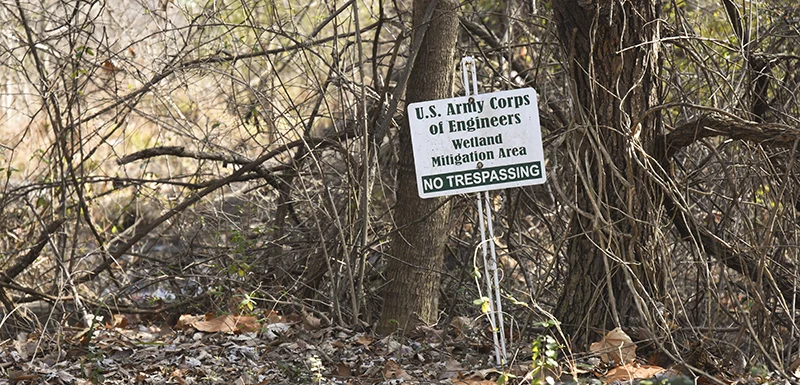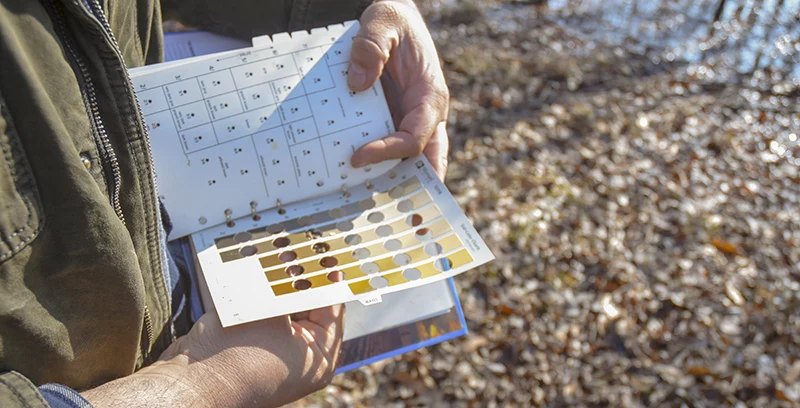
Crafton Tull
Since 1963Once thought of as wastelands with no practical use or benefit to society, our understanding of the importance and value of wetlands has made significant advances in recent decades. Previously drained for farming or urban development, many municipalities are now seeing the benefits of leaving wetlands undisturbed, and even in constructing new wetlands in and around their metropolitan areas.
What is a wetland?
In the United States, wetlands are defined as “Those areas that are inundated or saturated by surface or ground water at a frequency and duration sufficient to support, and that under normal circumstances do support, a prevalence of vegetation typically adapted for life in saturated soil conditions. Wetlands generally include swamps, marshes, bogs, and similar areas." (40 CFR 230.3)

Some examples of the practical and economic benefits wetlands provide for municipalities include:
Flood Control
After a heavy rainfall, surface water must go somewhere. Wetlands act as natural sponges by capturing and slowing down the flow of surface water, and then gradually releasing it after peak flood flows have passed. These low-lying areas serve to reduce the frequency and intensity of floods by absorbing and storing significant amounts of stormwater, which reduces property damage and erosion downstream.

Water quality
When the flow of surface water is slowed down or contained, sediment has more time to settle out. Since wetlands have the ability to break down and remove pollutants and contaminants from stormwater, they help improve the water quality of nearby rivers and streams by functioning as natural filters, eliminating many pollutants before they reach local drinking water sources. Add to that their ability to handle fluctuating water levels and they can serve as an alternative to more conventional stormwater containment methods.
Because of these water purification features, some municipalities have also taken to constructing wetlands to treat their stormwater and wastewater. These natural water treatment systems are often less expensive to build than traditional treatment systems – and also have lower expenses associated with their operation and maintenance.
Carbon sequestration
Another advantage of wetlands is their ability to act as a “carbon sink”. Due to the low levels of oxygen in the saturated soils of wetlands, organic matter decomposes much slower than in upland areas. This means carbon that’s been removed from the atmosphere through the photosynthetic activity of a plant during its lifetime, or carbon that’s stored in the bodies of animals that consume these plants, is stored in wetland soil long after they die. The term “carbon sink” refers to the process whereby organic matter accumulates in the wetland’s soil over time, and the role wetlands play in reducing the amount of carbon in the atmosphere.

Recreation and tourism
Wetlands provide food, habitat, and shelter for many species of birds, fish, insects, amphibians, reptiles, and other wildlife, and likewise are some of the most biologically productive ecosystems in the world. Some species, such as migrating waterfowl, rely on wetlands to rest, eat, and reproduce. In fact, one-third of the threatened and endangered species in the lower 48 states live only in wetlands, and an additional 20% use or inhabit wetlands at some time in their life. Because of the high amount of biodiversity associated with these ecosystems, they are often popular places for recreational activities such as fishing, hunting, hiking, birdwatching, and photography. These activities help stimulate local economies, bringing visitors to locally owned stores, restaurants, and hotels, which results in additional income for these businesses as well as a tax benefit to the city. Some municipalities capitalize on ecotourism by promoting a canoe trail through their wetlands for nature lovers that enjoy a truly immersive experience. Parks and recreation departments often rely on volunteer groups for preservation efforts of the wetlands that can be low-maintenance / high value park open space.
While many people may envision a vast expanse of swampland when they think of a wetland, the reality is that they can be constructed to fit whatever size or shape their intended use allows. Whether the goal is to capture stormwater runoff from a nearby parking lot, or to re-establish wildlife habitat, wetlands offer many practical benefits that warrant consideration in city planning.